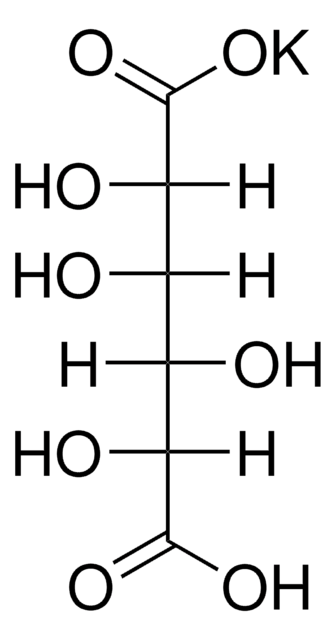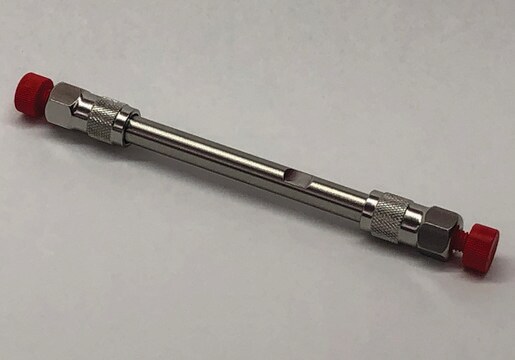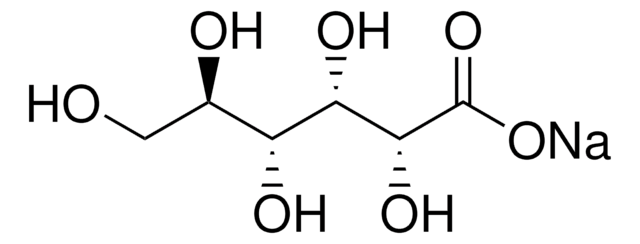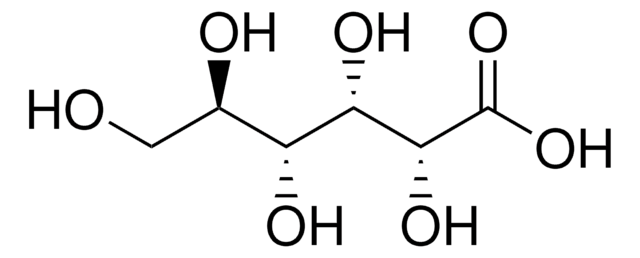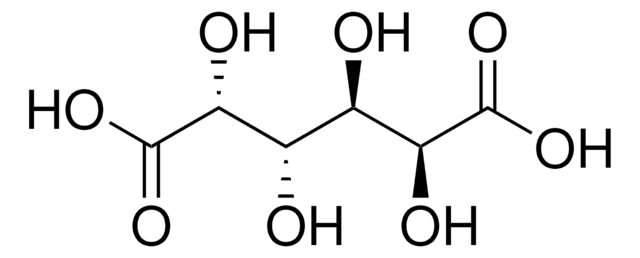S0375
D-Saccharic acid 1,4-lactone monohydrate
≥98.0% (HPLC)
Synonym(s):
D-Glucaric acid-1,4-lactone, D-Saccharolactone
About This Item
Recommended Products
Assay
≥98.0% (HPLC)
form
powder
impurities
≤10.0% water (Karl Fischer)
color
white
mp
91 - 93 °C ((196 - 199 °F ))
solubility
water: 50 mg/mL, clear, colorless to faintly yellow
storage temp.
2-8°C
SMILES string
O.O[C@@H]1[C@@H](O)C(=O)O[C@@H]1[C@H](O)C(O)=O
InChI
1S/C6H8O7.H2O/c7-1-2(8)6(12)13-4(1)3(9)5(10)11;/h1-4,7-9H,(H,10,11);1H2/t1-,2-,3+,4+;/m1./s1
InChI key
NPFKVZHSFSFLPU-QGBSHYGGSA-N
Looking for similar products? Visit Product Comparison Guide
General description
Application
Other Notes
Storage Class Code
11 - Combustible Solids
WGK
WGK 3
Flash Point(F)
Not applicable
Flash Point(C)
Not applicable
Personal Protective Equipment
Choose from one of the most recent versions:
Already Own This Product?
Find documentation for the products that you have recently purchased in the Document Library.
Our team of scientists has experience in all areas of research including Life Science, Material Science, Chemical Synthesis, Chromatography, Analytical and many others.
Contact Technical Service